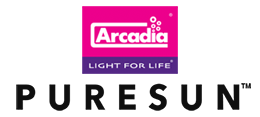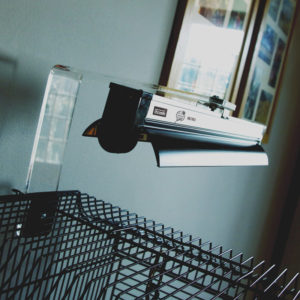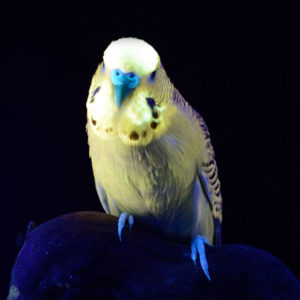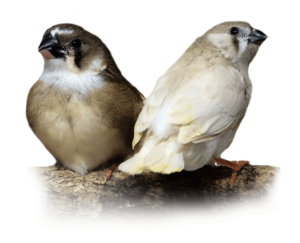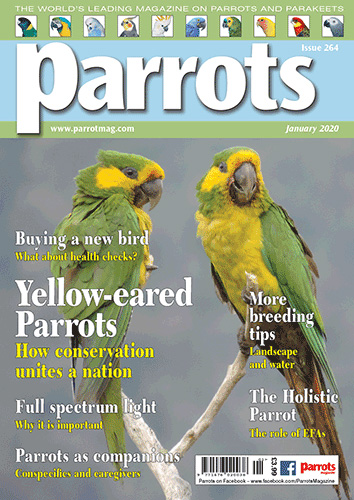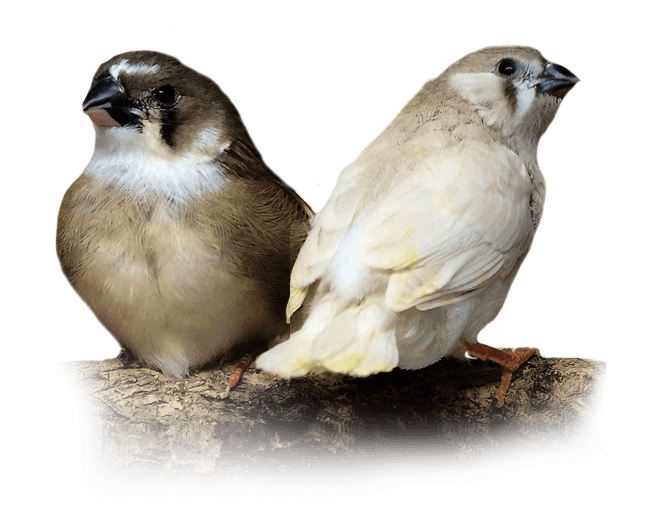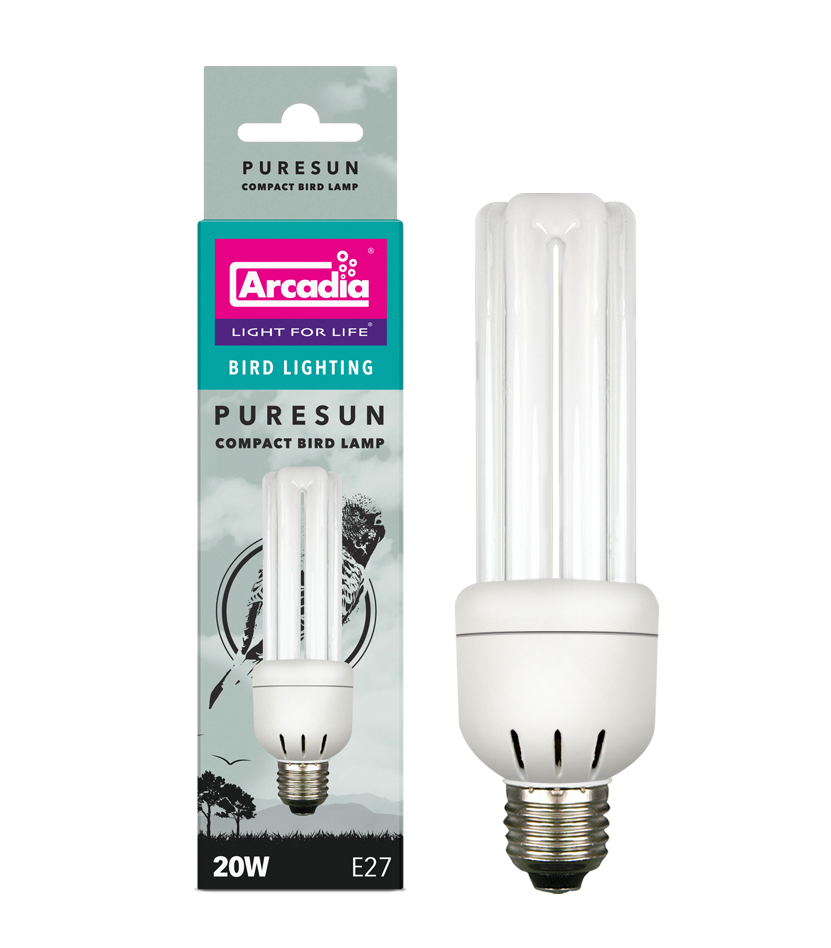
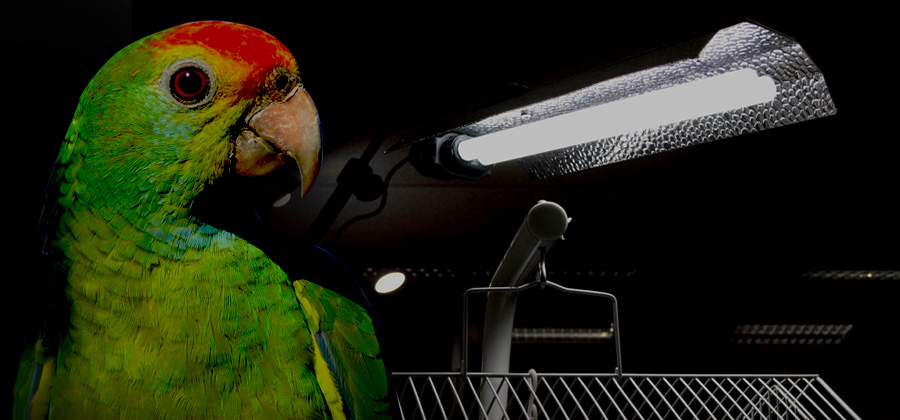
Part 1
What is light and why it so important?
Part 1 / Issue 264
Parrot Magazine / January 2020
What is light and why it so important?
Since last writing for this magazine, I have been busy developing new products that help us to provide the best care for our pets in the most natural way, and explaining the real value of natural light.
This then led to the release of a new book in December 2018 that deals solely with this subject in regard to the ethical and effective keeping of captive reptiles. However, this is a theory that applies to all of life, as we all utilise light, and largely all in the same way. It is worth noting also, that birds and reptiles are very closely related, subsequently, the vast research conducted into the correct provision of light for reptiles also applies in almost every way to the correct provision for birds. The only core difference is, that reptiles are ectothermic (cold blooded, gleaning the energy they need to function from light), and that birds are endothermic (able to use the energy contained within food to power their bodies).
In this article, I will describe what light is, why it is vitally important for nutrition, and then seek to cover the subject of why full-spectrum + UV-B lighting for birds is so important. It is clear that I annot cover this huge subject in just one issue, so have split into a number of articles, as I try to xplain the jumble of facts in a coherent fashion. I hope you are then able to make suitable changes in your homes, so that your birds can live long and healthy lives.
The importance of the theory of ‘development over time’ or ‘Natural selection’
It has become very clear that all life on earth, regardless of species has, in some way, changed and developed over vast periods of time in order to be able to take everything that is needed to exist in the areas in which a species is found. All of this, of course, is adapted in order for animals to be able to truly thrive. As humans, being food orientated and rather blind to nature, we only tend to focus on the energy contained within food and water, or even more likely in the modern era, the ‘tastes’ of the foods that we consume rather than the nutrition that it contains.
Life is far more complex than this in reality. In fact, the whole environment, and everything within and around it, in some way plays a vital role within the correct provision of a species from micro-flora/fauna to megafauna. Food of course contains both usable energy and the building blocks of life, which is particularly the case for endothermic species such as birds and mammals. Water is the ‘glue of life’, providing hydration, but it is also fundamental to biological function and a source of bioavailable minerals and some B vitamins.
However, we all seem to forget, or rather gloss over, another critical source of ‘free’ energy, which is used by every species in some way, be that through the growth of plants, as being the first step on the ladder of the food web, or as a source of direct energy itself. Of course, I am talking of the energy contained within light, or as it is more correctly thought of after the ‘filtering of our layers of atmosphere, ‘full-spectrum terrestrial daylight’.
The sun is colossally powerful, a source of pure unbridled energy radiating out into space and constantly onto our planet. This energy is almost unmeasurable unless you happen to be a physics professor, it is certainly hard to truly grasp for most of us. The sun not only provides us with light within the visible spectrum to view the world, but it also sustains our whole planet.
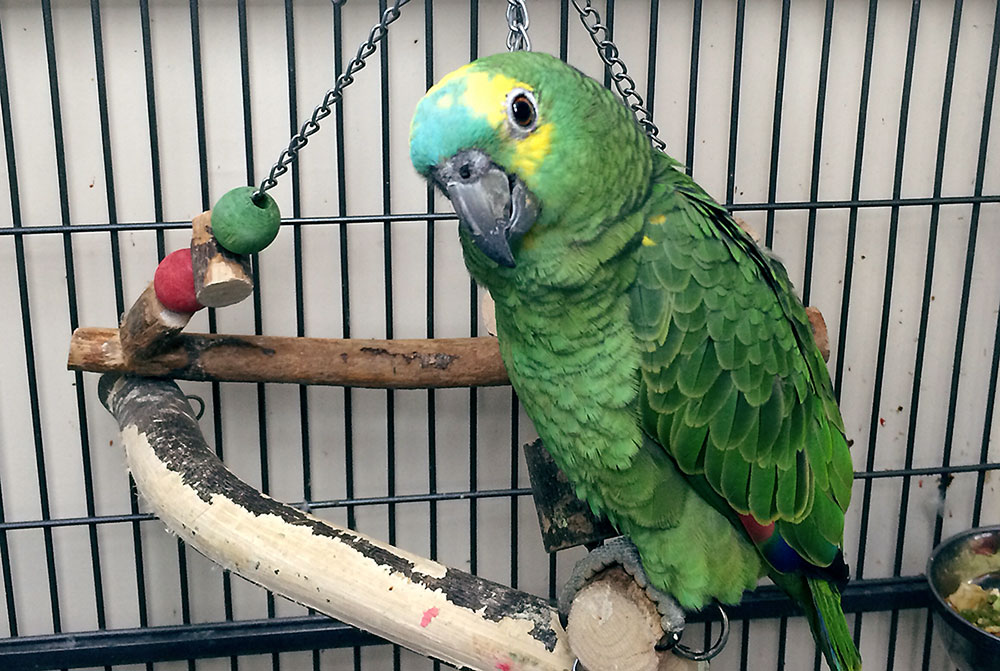
Light is responsible for all life, for the production of the air that we breathe, the cycles of our oceans, the magnetic fields around our planet, gravity, warmth and our weather. We omit the importance of the true nature of the projection of our sun at our peril. How much more vital is it then, and certainly in the case of captive birds kept indoors with no access to unfiltered sunlight, that we try and understand the sun and then seek to provide its energy in an emulated form in captivity.
Natural providers
Over the past few years I have had opportunity to start to re-think the concept of natural providers in the wild in order to better explain them and to then be able to help provide better or ‘more natural’ care systems for our captive pets. If we can agree that everything that exists around an animal is, in some way in the wild habitat a provider for the species, then it is only right to assume that these variables have become the true parameters of supply, those from which natural development has dictated high levels of use of.
One of the laws of thermodynamics states that energy is never used, but rather it is simply passed on, a concept that applies to life. Life is an intricate system of synergistic and symbiotic cycles and processes, each started and maintained in some way, either directly or indirectly by the sun. Sounds heavy and all very serious doesn’t it? Well it is!
If energy is passed on, then that which is used in nature must be provided within the remit of that which a species has developed to use. Any over provision, under provision or imbalanced provision will equate in direct terms to the same per cent of imbalance in every cycle and process in the body. In short and as an example, if we under supply UV-B, we remove an animal’s ability to create, self-regulate and also recycle preformed vitamin D3. This then leads over time to hypovitaminosis D and all of the diseases that equate to that wholly avoidable nightmare.
We then have to factor in the subsequent knock on effects of the under supply of D3, one for example, being an inability to assimilate, store and use earth minerals such as Calcium. Can you see how intertwined this balance of provision is?
Reversely, if we over provide UV-B, we bypass the naturally developed ‘use for’ and ‘level of protection against’ a supplier and cause harm. In this case burn, dermal and ocular damage even into the genetic level of the animal. We then risk the production of skin cancers.
The THREE parameters of overall-nutrition
We now think of the synergistic marriage between ingestible providers and the energy contained within daylight, as being as vital to overall-nutrition as each other. In reality, this is very much the case. There is a deep synergy between the ingestion of food and the assimilation, storage and use of its constituent parts, and being exposed to the energy contained within daylight. There are hundreds of biological processes and cycles, which occur naturally within the body that are intertwined with digesting food and the energy that is contained within light.
To make this all very easy to understand, we now describe the correct provision of nutrition as being ‘The THREE parameters of overall-nutrition’. By correctly classifying the suppliers that occur in nature, we are able to start drilling down into, and then making effective changes to the husbandry that we offer our pets.
Yes, enrichment is as vital as feeding and the energy contained within light in terms of overall-nutrition. Fit and healthy animals, which are able to move well, not only have lower levels of stress hormones, but they also have better blood flow and healthier organs. This increases the bioavailability of those providers that are ingested, and enables the body to utilise them properly.
The production of stress hormones, especially over long periods has a detrimental effect on life as a whole. Not only does this impact and reduce the function of the organs, but it also greatly reduces positive gut flora. In short, the microbiota is destroyed, leading to ongoing health concerns and those frustrations that we view as being bad behaviour.
What actually is light?
So, what is the energy in light and why is it important? Light, as in the visible light we use to view the world, has a far greater importance than simply allowing us to see. For a start, it is the quantity of, and spectrum contained within the visible spectrum, which provides plants with the energy that they need to photosynthesise. In horticultural circles, we refer to this energy as being ‘photosynthetic-active-radiation’ or ‘PAR’. The higher the PAR and the more alike a light source is to the sun, the higher the potential level of growth will be as it is this energy that allows plants to create the sugars that are needed to generate cells.
Light produced by our sun is filtered as it travels as pure energy into our world. Being part of the electro-magnetic-spectrum, light is made from countless trillions of ‘photons’, each of which push down into our world, pushing into everything that they touch, reflecting or delivering their energy as they do so. This is a constant barrage, a stream of energy, energy contained within the colours of the terrestrial spectrum and with each colour having a vital impact upon life in its own way.
Infra-red for example, heats our world largely through convection. Photons within terrestrial infra-red, first push into the terrain (everything they encounter) and are stored, then through re-admission, and being converted to long-wavelength infra-red, warm the air and water molecules within the air. Unfiltered daylight, as you can see, and as you will have experienced is energy filled, after all, we have all felt the suns touch, got into a hot car or experienced sun burn. This is energy, which is available for life to use.
What is a Photon?
A photon is better thought of as a ‘package’ or ‘parcel’ of energy. I like to think of them as a constant uncountable stream of tiny batteries, each carrying a charge and each impacting life. These providers push into or bounce off of everything that they encounter. Each has a use, and each helps to sustain our planet and the life therein.
Let us be clear, all light is made up of photons, whether it comes from the sun, a fluorescent lightbulb, tungsten lamp or LED, and each one of these photons contains a colour and level of energy. However, only specialist lamps are able to produce photons within the full-spectrum of daylight. LEDs, for example, are not currently able to generate a usable spectrum of, nor correct quantity of, ultra violet, therefore they are ‘unbalanced from daylight’ and not able to provide correctly for life. We will cover this in detail in a later issue.
Our atmosphere protects us from the harmful rays that the sun produces such as UV-C, this means that we only experience wavelengths of light on earth from UV-B to Infra-Red-B. let’s forget microwaves and x-rays and quarks for now, as we know they are there, but we do not know how they impact nature, I guess it’s rather like the old “Douglas Adams quandary of the meaning of 42”.
To conclude on the provision and description of light, we have all around us in nature a constant provision of energy pouring down into our world for as long as each illuminated day. These wavelengths of light are then grouped into segments of colour as a descriptive, how they look or indeed what they do.
The wavelengths of light that enter our world under our atmosphere from 290nm to 400nm are thought of as being within the grouping of ultra-violet, more properly known as being ‘UV-B and UV-A’. Wavelengths between 400-700nm are the core visible colours of the rainbow being known as ‘visible light’, to humans at least, which is very different for birds and reptiles. Anything above 700nm as being long wavelength red into IR-A and upwards into IR-B, and then IR-C, but only via the convection of terrestrial energy as it radiates back off the terrain – we call this the ‘earth’s budget’.
Light is fuel, pure and simple. It impacts and sustains our world and everything in it. If we can grasp what light actually is, trying our best to understand it, we will start to understand just how important its provision is for our pets and ourselves. This is all very ‘sci-fi’ I know, but light really is a force, and one that must be understood and respected.
In the next issue, we will look at how the differing wavelength groups impact life, how birds are highly developed to use light in amazing ways and then at some of the biological changes that occur after exposure to UV.
Images owned and supplied by Arcadia/Adam Hough photography.
Thank you to Parrot Magazine for publishing our article.
